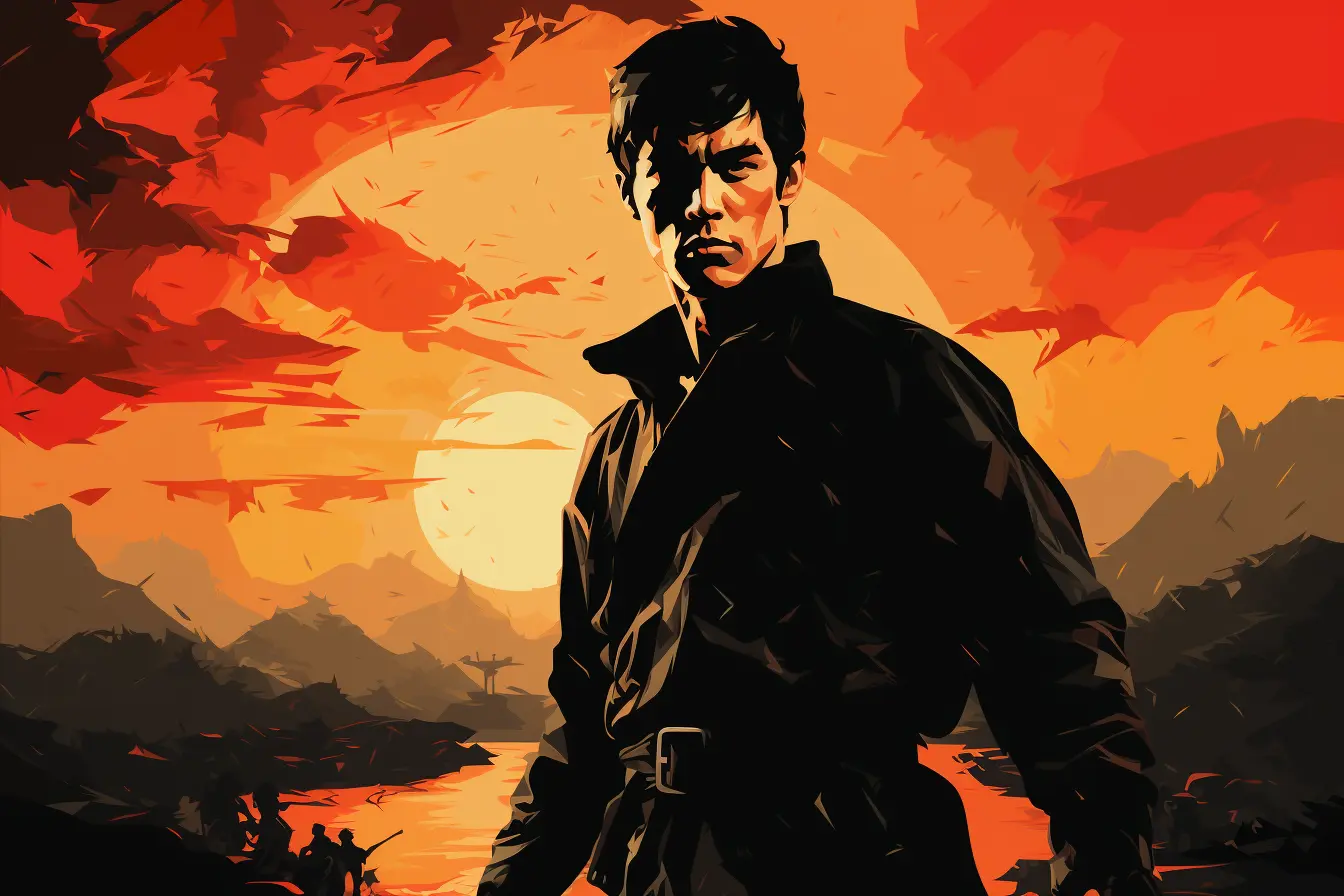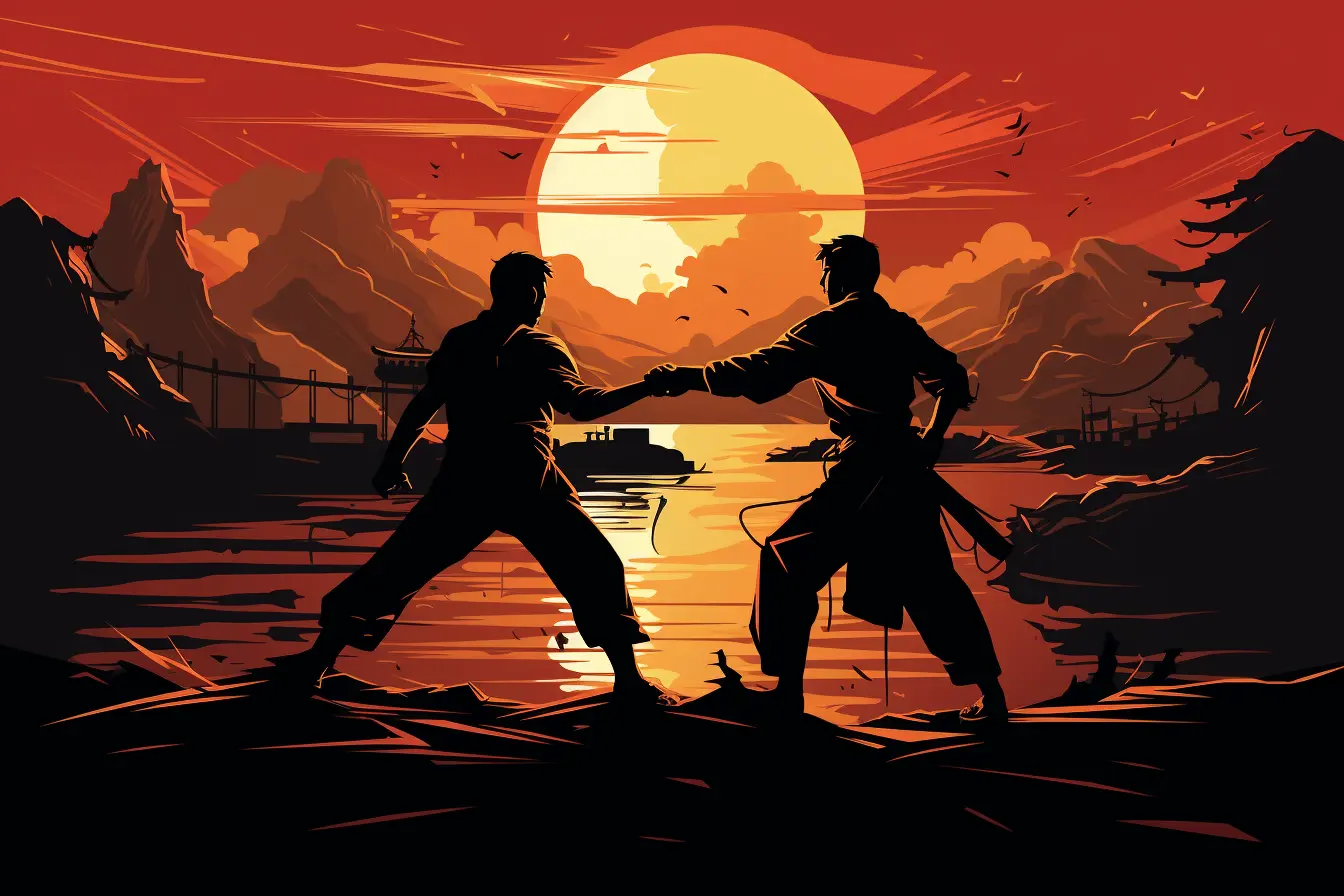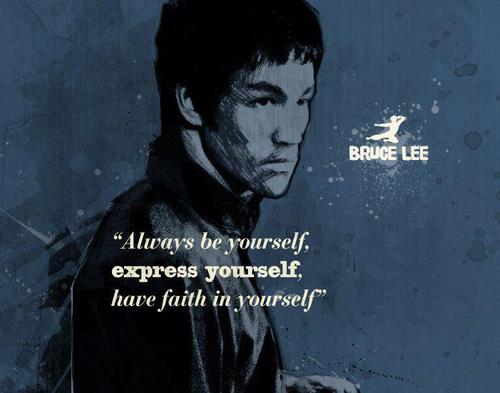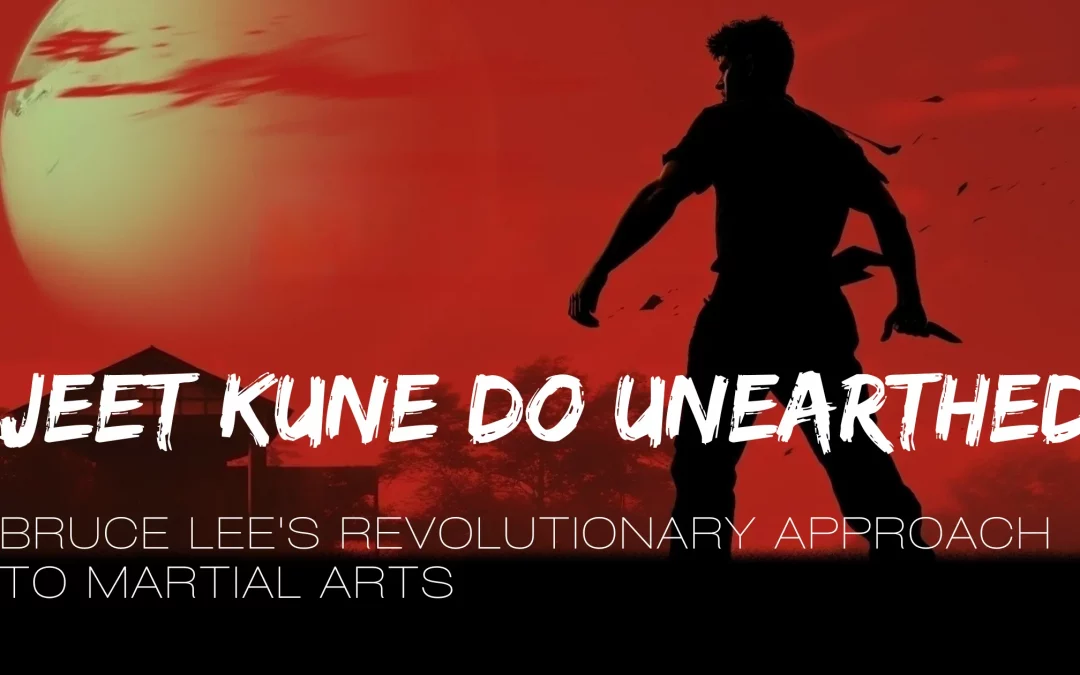Jeet Kune Do Unearthed: Bruce Lee’s Revolutionary Approach to Martial Arts
Embarking on Bruce Lee’s Trailblazing Legacy
Revered not only for their combat techniques but also for the philosophies they imbue, martial arts cut across all cultures and continents drawing the fascination and holding the attention of audiences and practitioners alike.
Few martial arts disciplines have provoked as much curiosity, passion, and admiration as Jeet Kune Do. Often abbreviated as JKS, this is not merely a style, it’s a philosophy, a movement, even a way of life!
Pioneered by the legendary Bruce Lee, Jeet Kune Do stands as a testimony to his vision of a martial form that prioritizes adaptation, efficiency, and personal expression over rigid traditions.
By reading this article, you’ll uncover the intricacies behind Jeet Kune Do’s creation. You’ll delve deep into the inspirations that guided Bruce Lee, and explore the seismic shifts this revolutionary martial art form triggered in the world of combat disciplines. Get ready as we embark on a trailblazing exploration of this groundbreaking martial arts discipline so unique it has no rival.
Bruce Lee: The Maverick Pioneer of Jeet Kune Do
Bruce Lee—these two words resonate with power, agility, and a martial arts genius that forever changed the face of combat disciplines. Born Lee Jun-fan in San Francisco in 1940, Bruce Lee’s life story is an intertwining tale of cinema, martial artistry, and an insatiable quest for perfection.
A Glimpse into Lee’s Early Years
From an early age, Bruce Lee was introduced to the world of films, acting in several Hong Kong movies as a child. But it was martial arts that would capture his heart and define his legacy. At the tender age of 13, under the careful tutelage of Yip Man, Bruce began his training in Wing Chun—a form of Chinese martial arts known for its swift movements and close combat techniques.
Yet, as Bruce matured, he became restless. He recognized the limitations of sticking to a single traditional style. His skirmishes with rival martial artists and street fighters further validated his belief that real-world combat was unpredictable and didn’t adhere to structured martial patterns.

Blending East with West
Bruce’s move to the United States in the late 1950s was pivotal not just for his film career but also for his martial arts journey. Exposed to Western boxing, fencing, and various other martial arts forms, Bruce began to see the potential in integrating diverse techniques. He believed that martial artistry should be fluid, ever-adapting, and not confined by tradition.
This philosophy culminated in the birth of Jeet Kune Do in the late 1960s—a martial arts style that emphasized “using no way as way” and “having no limitation as limitation”. JKD was not about fixed patterns or memorized movements; it was about instinct, adaptation, and the liberation of one’s true potential.
JKD: More Than Just Moves
To understand Jeet Kune Do, one must delve deep into Bruce Lee’s mind. For him, JKD was never about the number of kicks or punches one could master. It was a reflection of his personal philosophy, drawing inspiration from Taoism and other Eastern philosophies. This approach made JKD stand out; it wasn’t just a martial art—it was a mindset.
In Bruce’s words, “Absorb what is useful, discard what is useless and add what is specifically your own.” This ethos became the guiding principle of Jeet Kune Do, emphasizing the importance of personalization in martial arts and life.
As we peel back the layers of Bruce Lee’s life, his dedication to evolution and constant learning shines through. It’s this spirit that led to the birth of Jeet Kune Do, a martial art form that broke the shackles of tradition and inspired generations to think and fight differently.

The Emergence and Legacy of Jeet Kune Do
Jeet Kune Do, often abbreviated as JKD, didn’t just materialize overnight. It was an ever-evolving martial art form, nurtured by Bruce Lee’s innovative mindset and further honed by the contributions of his dedicated disciples. Its journey from a personal philosophy to an internationally recognized discipline is as captivating as the art itself.

Genesis: Beyond Wing Chun
Bruce Lee’s foundations in Wing Chun served as the initial stepping stone for JKD. However, after his infamous challenge fights in the US, particularly his match with Wong Jack Man, Bruce started reflecting on the limitations of traditional martial arts. This introspection, paired with his exposure to diverse fighting styles, catalyzed the early formulation of JKD principles—pragmatism, simplicity, and efficiency.
The Los Angeles Years: Cultivating JKD
During the 1960s, while based in Los Angeles, Bruce founded his third martial arts school, where he began imparting his evolving techniques. Key students from this era, like Dan Inosanto, became instrumental in spreading JKD’s philosophies and techniques. They witnessed firsthand the transition from the Jun Fan Gung Fu—a blend of Bruce’s early teachings—to the foundational principles of JKD.
After Bruce: The Torchbearers of JKD
Bruce Lee’s untimely death in 1973 could have been the end of Jeet Kune Do’s evolution. But, it was far from it. His dedicated students refused to let the flame die out. Dan Inosanto, in particular, took up the mantle, standardizing JKD techniques and ensuring that the art remained true to Bruce’s original vision. Through his efforts, and those of others like Taky Kimura and Ted Wong, JKD schools proliferated worldwide.
I can speak from experience when I say that Master Inosanto is as passionate about this discipline today as he was in the early days of learning this discipline from Bruce Lee. He is the perfect ambassador of JKD spreading his knowledge and teaching to students all over the world to this day.
With that being said, this expansion wasn’t without its controversies. With Bruce Lee’s passing, different interpretations of JKD emerged, leading to debates about its “original” form. Some argued for a strict adherence to Bruce’s techniques, while others believed in its continual evolution, in line with Lee’s own philosophy of adaptability.

JKD Today: A Living Legacy
Today, Jeet Kune Do stands as a testament to Bruce Lee’s genius and the dedication of his students. It’s more than just a martial art—it’s a philosophy, a way of life. JKD schools across the globe, while varying in their techniques, carry forward Bruce’s core message of freedom, self-expression, and adaptability in combat and in life.
The evolution of Jeet Kune Do is, in many ways, a reflection of Bruce Lee’s own journey—always learning, always adapting. From its embryonic stages in Bruce’s mind to its formalization and global recognition, JKD remains a martial art that speaks to the soul, urging its practitioners to find their own way.
Jeet Kune Do: Disrupting the Martial Arts Paradigm
The landscape of martial arts, rich with centuries-old traditions, forms, and disciplines, was drastically transformed with the advent of Jeet Kune Do. By challenging existing conventions, Bruce Lee’s JKD introduced a new era of martial arts, setting the stage for the modern combat sports we recognize today.
Breaking Free from the Mold
Traditional martial arts often emphasized specific forms, katas, or sequences. Practitioners were trained to master these patterns, often over years, if not decades. However, Bruce Lee saw these set forms as restricting. To him, real combat was dynamic, unpredictable, and devoid of rehearsed sequences. JKD was his answer to this realization, advocating for flexibility and spontaneity over rigid forms. He famously compared it to water: “Be formless, shapeless, like water. Now you put water into a cup, it becomes the cup.”
The Philosophical Shift
Beyond techniques, JKD’s real revolution was philosophical. Bruce believed that martial arts should be a personal expression and that every individual should adapt techniques that work for them, discarding what doesn’t. This was in stark contrast to traditional martial arts schools, which often propagated the idea of a singular, unchanging path to mastery. In JKD, there was no fixed path—only guidelines, principles, and the idea of self-discovery.
Paving the Way for Mixed Martial Arts (MMA)
It’s hard to discuss the modern phenomenon of Mixed Martial Arts without acknowledging the influence of Jeet Kune Do. While JKD is not MMA, its philosophy of absorbing what is useful, rejecting what is useless, and adding uniquely one’s own, became the foundation for MMA. Bruce Lee is often referred to as the “father of MMA” because of this. Fighters began cross-training in different disciplines, seeking to become versatile and unpredictable, much in the spirit of JKD.
Contemporary MMA champions often cite Bruce Lee as an inspiration, not just for his unmatched skills, but for his vision of a holistic fighter—proficient in various ranges of combat, from striking to grappling.
In essence, Jeet Kune Do was more than a new martial art—it was a revolution. By questioning the status quo and urging practitioners to think for themselves, Bruce Lee changed the course of martial arts history. And his legacy, Jeet Kune Do, remains a shining beacon, guiding fighters and enthusiasts towards a path of continuous growth and self-expression.
The Journey of Jeet Kune Do: From Insight to Influence
In the annals of martial arts history, few disciplines have left as indelible a mark as Jeet Kune Do. From its inception to its transformative impact on the world of combat, JKD is more than just a martial art—it’s a philosophy, an evolution, and a testament to the genius of Bruce Lee.
From our exploration, we’ve seen how Bruce Lee’s personal experiences and diverse training background catalyzed the formation of JKD. It wasn’t just a reaction to the traditional systems he trained in, but rather a profound realization that martial arts could be more—a deeply personal journey of self-expression and efficiency.
The evolution of JKD, tracing its formalization, especially post Bruce Lee’s untimely demise, is a poignant reminder of its lasting relevance. Bruce’s students, recognizing the potency and promise of his teachings, worked ardently to ensure that Jeet Kune Do’s essence was preserved, while still allowing it the space to evolve.
In the larger canvas of martial arts, Jeet Kune Do disrupted conventions. It questioned long-standing practices, emphasizing adaptability over rigidity, and in the process, laid foundational ideas for the rise of mixed martial arts. Today’s MMA fighters, in their quest for holistic combat proficiency, echo the sentiments of JKD—adopt what is beneficial, discard what isn’t, and craft a unique fighting identity.
But our exploration doesn’t end here. While we’ve delved deep into the history and influence of Jeet Kune Do, the philosophy that powers it warrants a closer look. Join us in our next article, as we unearth the principles of JKD—deciphering its core tenets and understanding how they empower the modern martial artist to be fluid, dynamic, and ever-evolving.
Till then, in the words of Bruce Lee, “Absorb what is useful, discard what is not, add what is uniquely your own.”

